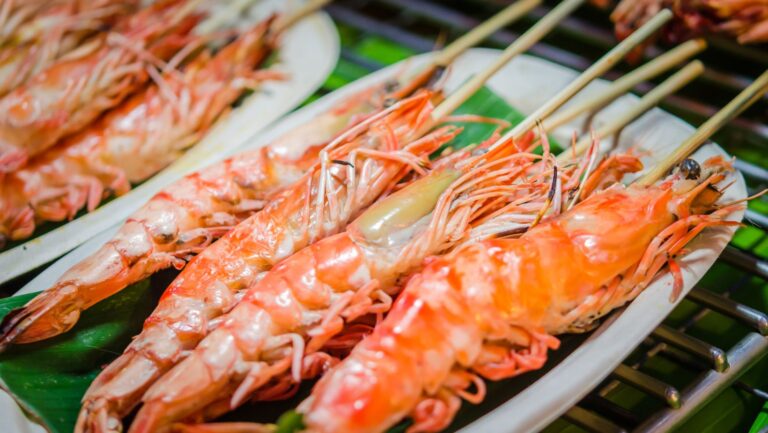The allure of skewered dishes transcends borders, weaving a thread of culinary kinship around the globe. These delicacies, known for their simplicity and rich flavors, offer a glimpse into the heart of diverse cultures. This article invites you on a gastronomic journey to explore the world of skewered cuisine, from the smoky streets of Asia to the bustling markets of the Middle East, including a nod to the renowned Japanese Yakitori.
The Universal Charm of Skewered Delights
Skewered cooking, a universal culinary practice, combines convenience with a unique taste experience. Whether it’s meat, vegetables, or seafood, skewering allows for even cooking, infusing the ingredients with a smoky, charred flavor that’s universally adored.

Embarking on a Global Skewer Adventure
1. Southeast Asia – Satay: This Indonesian-origin dish is a staple in Southeast Asia, where marinated meats like chicken, beef, or lamb are grilled over an open flame. Accompanied by a rich peanut sauce, Satay is a perfect blend of sweet, savory, and spicy flavors.
2. Middle East – Kebabs: The Middle Eastern culinary tradition offers various kebabs, such as Shish Kebab and Kofta Kebab. These skewers, made with ground or minced meat mixed with herbs and spices, are often paired with flatbreads, salads, and yogurt-based sauces, showcasing the region’s rich flavors.
3. Brazil – Espetinhos: In Brazil, ‘Espetinhos’ are skewered barbecued meats, often seasoned with traditional Brazilian spices. These street food favorites highlight the country’s passion for grilling.
4. Greece – Souvlaki: Souvlaki, a beloved Greek dish, consists of small pieces of meat and sometimes vegetables, grilled on a skewer. Typically served in a pita with tomatoes, onions, and tzatziki sauce, it’s a testament to Greece’s culinary simplicity and flavor.
5. Japan – Yakitori: In Japan, Yakitori, meaning “grilled chicken”, is a celebrated form of skewered cuisine. It involves grilling various chicken parts, such as thigh, breast, and wings, over a charcoal flame. Seasoned with salt or a special sauce called tare, Yakitori is a delicious example of Japan’s refined approach to grilling.

The Global Influence of Skewered Cuisine
The journey through the world of skewered dishes is more than a culinary exploration; it’s an insight into the cultural significance and versatility of this cooking method. From the spicy Satay of Southeast Asia to the intricate flavors of Japanese yakitori, skewered dishes are a window into the world’s diverse culinary traditions. They represent a shared love for gathering around a fire, cooking with simplicity, and enjoying the rich, smoky flavors that only grilling can provide.
Conclusion: A Celebration of Skewered Delights
Skewered cuisine, in all its varied forms, offers a unique dining experience that transcends geographical and cultural boundaries. It demonstrates how a simple method of cooking can bring out complex flavors, creating dishes that are deeply embedded in the cultural fabric of each region. Whether it’s the vibrant streets of Asia or the lively fiestas of South America, skewered dishes are a global celebration of flavor, tradition, and the communal spirit of cooking and eating together.


